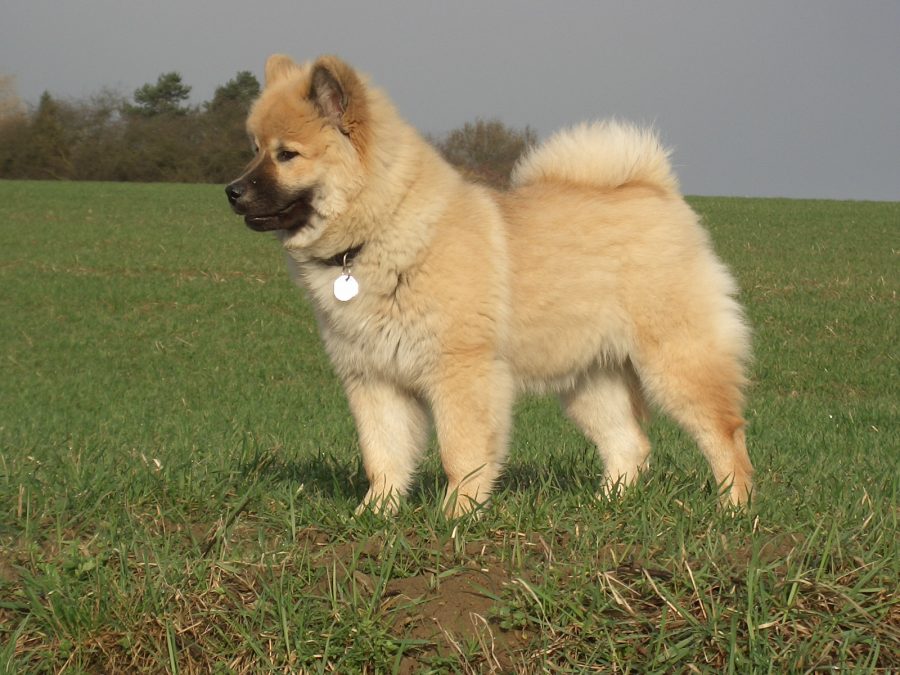
He was known as “the Canadian,” a dog whose origins were never really known. It was after 1945 when Germany was under the control of the allies, and when Canadian troops pulled out of Mannheim, they left behind “the Canadian.” He was in an animal shelter when Julius and Elfriede Wipfel found him, a black dog with a wolf-like skull, and ears that were more erect than not. The Wipfels thought he looked like “something in between an Eskimo dog and a Samoyed,” and took him home.
The Canadian proved to be intelligent, loyal (and the canine Terminator to every small animal that crossed his path). Still, he was a reliable friend to the Wipfel’s toddler, and the family adored him. After he died, Wipfel and his wife looked for another dog like the Canadian, and acquired “Bella,” a Wolfspitz (one of the oldest dog breeds in Europe). Bella’s appearance reminded the Wipfels of the Canadian, but Bella’s temperament was better. Bella had a few litters, but Julius and Elfriede couldn’t forget the Canadian, so they quit trying. They decided to try to duplicate the Canadian by creating a new breed.
Julius boned up on genetics, read the works of zoologist, Konrad Lorenz, and settled upon blending the best qualities of the Chow Chow and the Wolfspitz. The result was initially called a “Wolf-Chow,” and twelve years later after crossing with a Samoyed, the new breed was renamed the “Eurasier.” Nobel Laureate Konrad Lorenz got a Eurasier puppy he named, “Babett,” and pronounced her character to be the best he had ever known in a dog.
The Eurasier was recognized by both the German Kennel Club and FCI in 1973, and by the Canadian Kennel Club in 1995.
Image of a young Eurasier from Wikicommons under the GNU Free Documentation License
